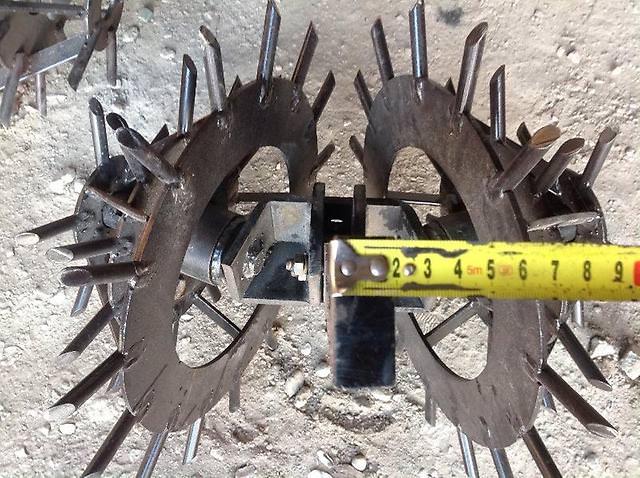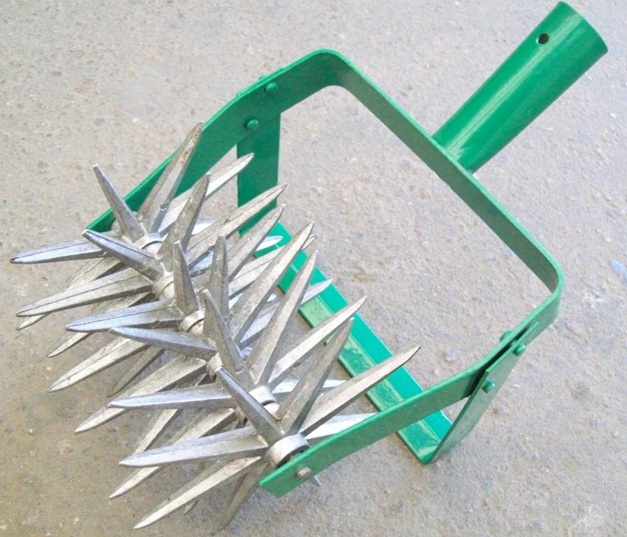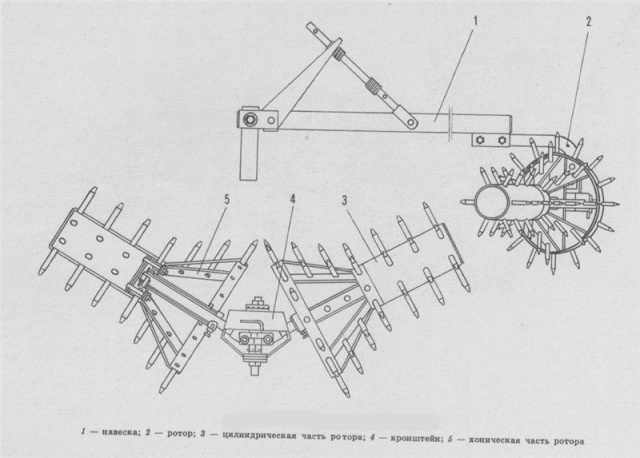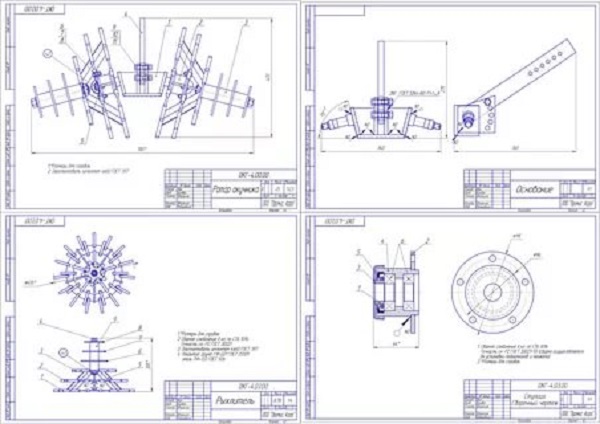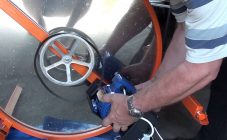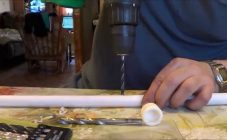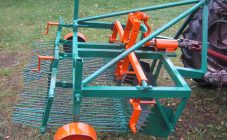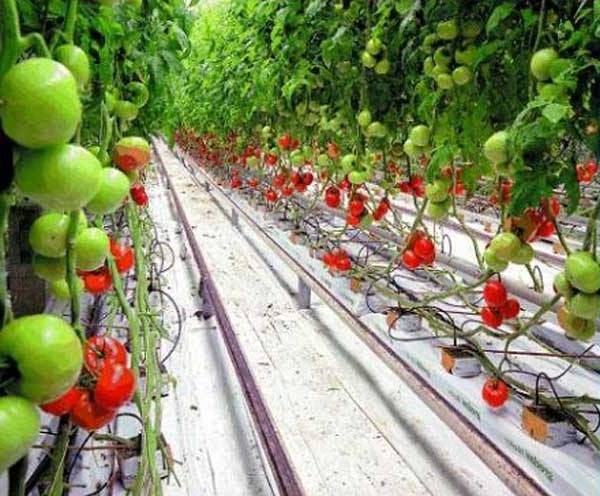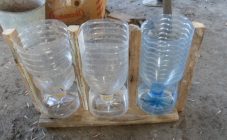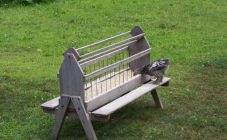The volume and quality of the crop depends on the correct and timely weeding of potatoes. This widespread horticultural crop is responsive to weeding and requires more than one or even two weed control over the season.
Potatoes emerge later than the appearance of weeds, in the future it is necessary to carry out one or more weeding in order to timely remove weeds and improve the quality of garden products. That is why weeding as an agricultural technique always takes a lot of time and effort from summer residents and gardeners. However, today many people use technical means to facilitate this work. In particular, hedgehogs are used on a cultivator for potatoes. You can buy a soil cultivator with ready-made attachments, but we will tell you how to make hedgehogs for weeding potatoes with your own hands, we also offer drawings below.
Weeding hedgehogs: purpose and types
In addition to their direct function, weed removers help to solve several related problems at once:
- loosen the soil area near the potato bush;
- reduce moisture loss;
- promote better tuber formation;
- due to timely cultivation, potatoes of any variety are less affected by pests and diseases.
On large plots, summer residents and farmers find it difficult to get by with primitive tools: hoes and rakes. In the fields, manual implements are replaced by a cultivator walk-behind tractor and hedgehogs for mechanized weeding of potatoes.
Thanks to these functions, the potatoes are spilled quickly, with a minimum of labor. This is the advantage of any type of hedgehog. It's easy to buy them today. But there is one significant disadvantage of ready-made devices - they are not cheap. You can reduce the cost of purchasing equipment by building a hedgehog with your own hands.
Homemade gadgets are affordable, simple and reliable. Their manufacture is possible from scrap materials and those that are sold in any hardware department of a hardware store.
Hedgehog designs and drawings
Country craftsmen make a variety of designs of hedgehogs. But they are all similar in that they consist of three rings of different sizes, connected by welded bridges. The rings form a conical structure, each ring is equipped with metal rods. The size of such a rod is from 5 to 10 cm. The cones are fixed on a pipe, inside which there is a fixed axis. As a rule, in summer cottage work, two hedgehogs are used, which are attached to any improvised garden tool, they have a wooden handle. The fastening is done at an angle so that the cones, rotating, could not only pull out weeds while moving, but also huddle the bush with the formation of a neat bed. There are hedgehogs that can be attached to agricultural machinery.
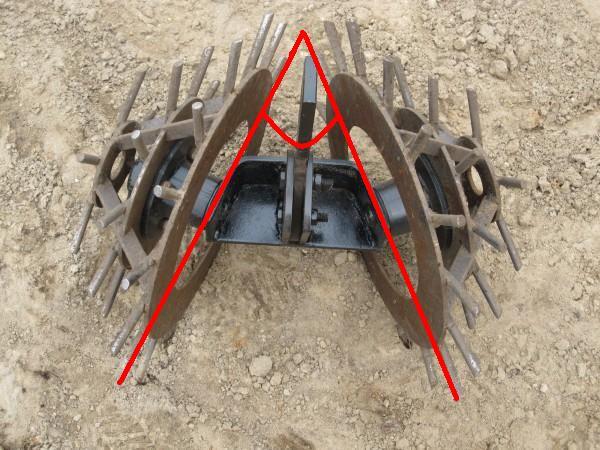
Usually, the angle between the cones is left at 45 degrees for the convenience of hilling plants and forming ridges
Now about how you can make hedgehogs for processing potatoes with your own hands: sizes, drawings, diagrams.
If the potato area is small, a simple device can be constructed.
Such a homemade hedgehog cultivator will cope with weeds without damaging the potato seedlings.
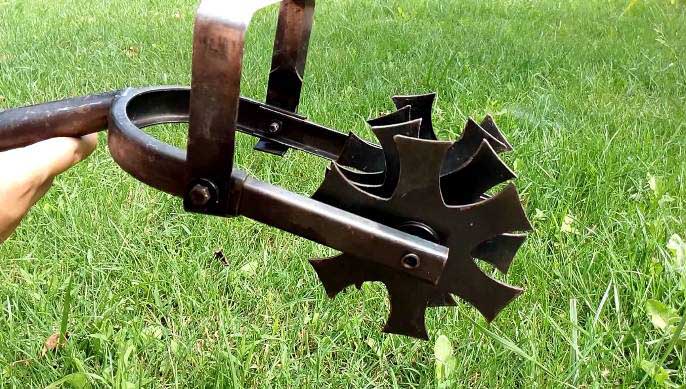
In summer cottages, gardeners most often use the simplest homemade hedgehogs, they are easy to make with their own hands
Step by step, it is done like this:
- Metal sprockets are welded onto a piece of pipe d 14-25 cm and 25 cm long (possibly smaller, according to the size of the desired row spacing); they are equipped with spikes or pointed ends. The photo above shows hedgehogs with stampings in the form of stars, below - with thorns;
- To rotate the hedgehog, a hub is installed on a bearing. For fastening, a frame is made of metal, an ordinary wooden handle is attached to it.
Such a device successfully pulls out weeds near potatoes. By rolling the device back and forth, it is possible to uproot most of the weeds, which favorably distinguishes the hedgehog from the plane cutter, which cuts the weed from above. However, this work requires a lot of physical effort. Therefore, you can make a hedgehog for a walk-behind tractor using an independent drawing or the one that we offer below.
The official set of the walk-behind tractor may contain a ready-made hedgehog for weeding, but in this case the walk-behind tractor will become significantly more expensive. A Moscow summer resident, and gardeners in other regions of Russia, make hedgehogs themselves, using, as a rule, ready-made drawings, using their own materials and constructive additions.
Conical hedgehogs are more complex in the device, but they are also more efficient in work than hand tools. According to the scheme suggested above, you can make such a device at home.
Work and materials:
- To make one conical hedgehog, you will need three discs of different sizes. The parameters may be your own, you can use the dimensions 24 cm x 17 cm x 10 cm. All materials can be bought at metal depots (Moscow has a large number of collection points for ferrous metal, many summer residents buy the necessary pipes and other metal there);
- Drill a hole in the center of each disc equal to the diameter of the pipe to which the disc will be mounted. It can be 2.5 cm in diameter;
- Having calculated an equal distance between the disks on the pipe (up to 18 cm), the disks are welded with a welding machine. You can take a ring instead of a disk, the rings are connected to the pipe with bar bridges in the manner of spokes in a wheel;
- Now, spikes must be welded to three disks, fixed on a pipe in one hedgehog. The thorns can be cut from a rod 1 cm in diameter. The rod must be steel, strong. You need to cook about 4 dozen thorns for three discs of one hedgehog of this design. The spikes must be welded to the end parts of the disc or ring;
- Next, the second hedgehog is done in the same way. Both of them must be fixed into a single cultivation mechanism. Both hedgehogs should be connected at a 45-degree angle to each other and secured with a bracket. They are located with the largest discs inward, respectively, and the mechanism with which they are attached must be located inside the pipe. These can be bearings on the shaft, or there can be sleeve bushings;
- Hedgehogs will experience high pressure and stress when working with a walk-behind tractor. A pair of wheels can be adjusted to lower them. The guide wheels are fixed on a metal strip-bracket, it is quite thick (made of steel at least 4 millimeters thick), and the width of the bracket can be 7 cm;
- When the mechanism is ready, it is better to first carry out the tests in an open and potato-free area of a summer cottage or garden. If everything is done correctly, the device works efficiently, leaving behind a beautiful loosened and weeded soil with neat even grooves. It is not required to huddle potatoes again after such processing.
Hedgehogs are a handy device to facilitate agricultural work. They can be used both for manual processing and for mechanization of cultivation by attaching to a walk-behind tractor or mini-tractor. There are no fundamental differences both for a tractor and a walk-behind tractor, and for manual tillage. All of them are structurally similar and fulfill their task of weeding, loosening and hilling potato plantings.
